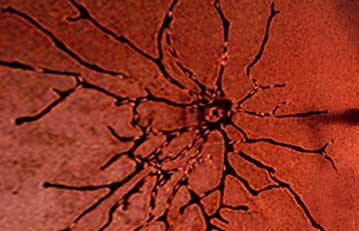
5.2 - Termite Nesting and Foraging in Two Dimensions

HandsOn Activities:
To someone sitting out in the sun watching the ants, bees, and beetles on a hot day, it appears that insects roam about in a random fashion. The trails they leave in the dust are less orderly than what we imagine the interiors of their nests must look like. Not only ants make nests; many other social insects do so as well. In nests of such insects, especially the highly organized insects such as termites, wasps, and bees, decisions appear to be made cooperatively, as if in a highly organized society.
The more primitive termites feed directly on the wood in which they nest, while advanced species of termites nest in soil and forage for dead wood, grass, seed, and other sources of cellulose, a major component of most plant cell walls. To reach this food, workers make tunnels through the soil, construct covered trailways over the surface of the ground, or mark exposed trails with odor for others to follow.
Studying such insects in the wild is a task for dedicated entomologists. However, it is possible to get a flavor for the nesting and foraging behavior of such social insects using simple apparatus. Below we describe such an experiment using termites.
In the experiment that follows, you study termites forming trails. The termites are confined to sand between two plates of acrylic plastic as shown in Figure . The plates are spaced 1/32 inch (0.08 centimeter) apart, corresponding to the widest part of a termite's body, its head. You place about 150 termites at the center of the cell, and from there they forage in the sand seeking food. There is no food in the sand (although you are invited to alter the experiment to include food-see research activities at the end of this unit).
 |
A fundamental question we try to answer is whether or not we can distinguish the termites' foraging behavior from random motion, and whether or not there is a quantitative way to evaluate the patterns of their trails.
|